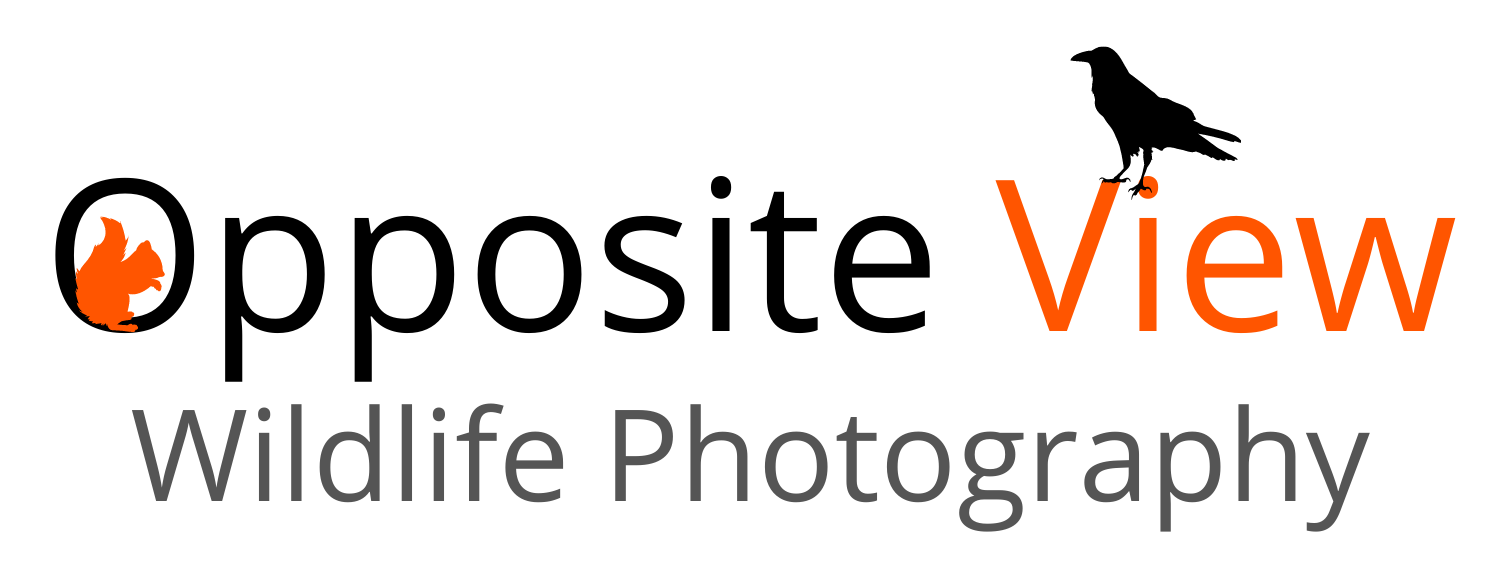While spring may have officially begun, the behaviour of the roe deer on my local patch is only just starting to warm up. Although fawning, the rut, and mating season are still some weeks away, early spring is the time to look for the shifts in behaviour and appearance that are the precursor to the most active part of the roe deer’s year.
The kids are united
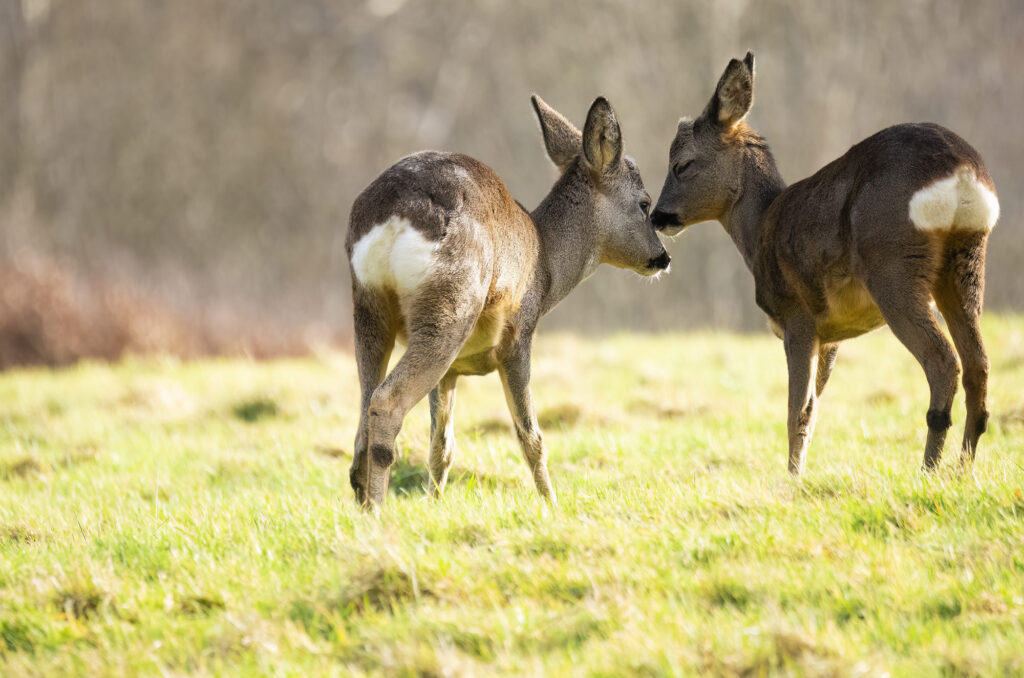
Back in summer, I discovered twin roe deer kids on my local patch. Their mother, Gamma, has raised them well, but I can see their attachment to her weakening. This is normal for young bucks who, more so than young does, will wander further away from their mother for short periods. While they may be less keen on spending time with Mum, the twin baby bucks seem to enjoy each other’s company and can often be seen feeding and hanging out together.
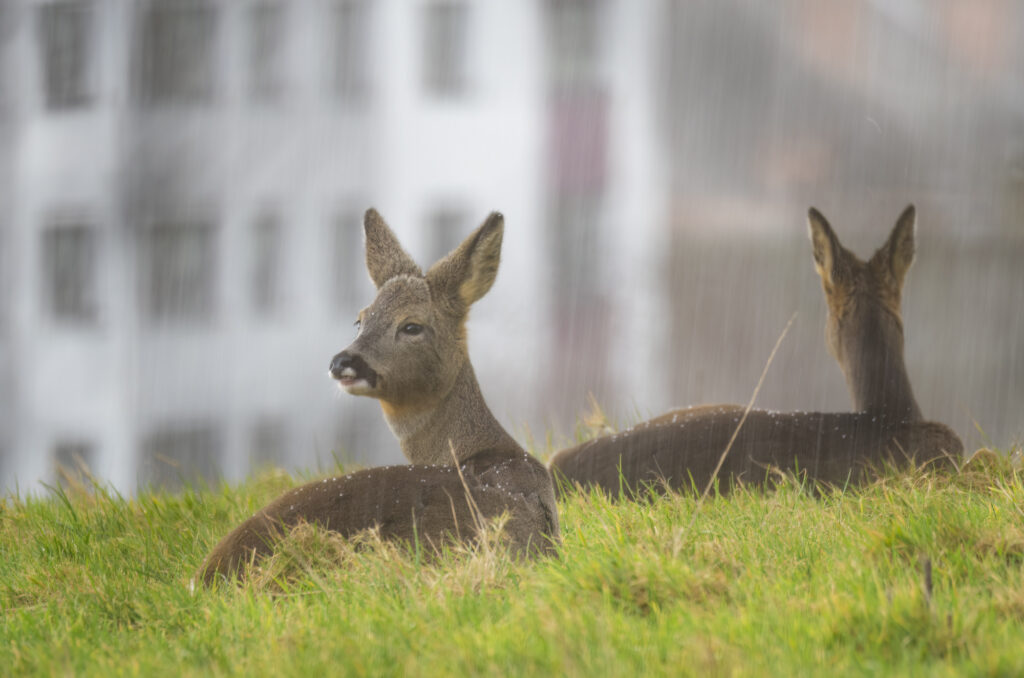
One February day, I was photographing the family resting on the brow of a hill when the sky darkened, and hail began to fall. One of the young brothers seemed particularly unimpressed with the sudden sharp downpour and got to his feet to walk away towards the shelter of the trees. Look out for activity like this after heavy rain showers. Once the outer part of their coat becomes waterlogged, deer will often stand up and shake to get rid of the excess moisture, preventing it from reaching their warm skin.
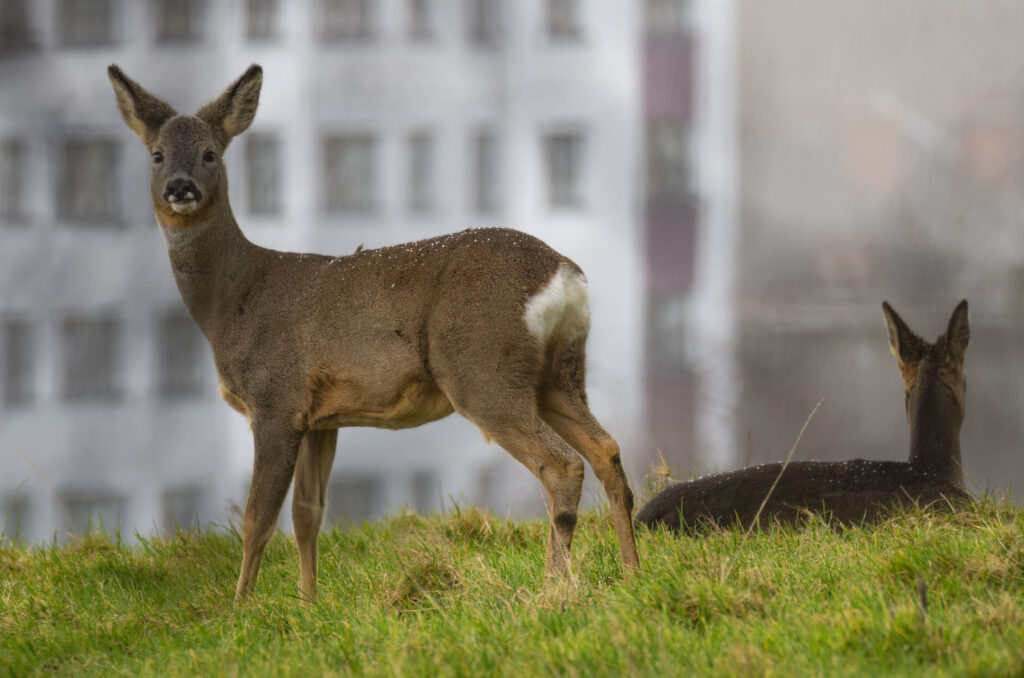
It will be interesting to watch how the young bucks’ relationship develops in the coming weeks, as this is the time of year when they become bolder and start preferring their own company. This shift is driven by their growing territorial instincts as they begin to establish their own space.
Field-first family
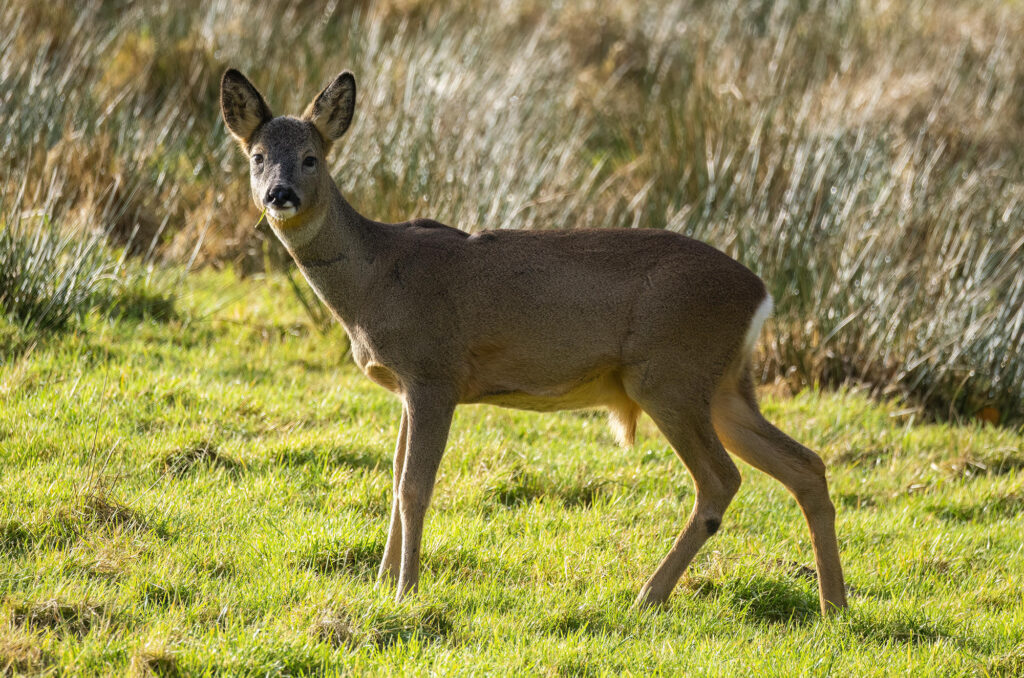
During a warm spell last month, the deer could be found grazing in one of the fields close to the main track where I walk. This made photographing them at close quarters considerably easier, so I made an effort to take my daily walk as early as possible, ensuring I reached the field before any lunchtime dog walkers disturbed them. This approach resulted in a few consecutive days of capturing quality images of the growing bucks. I recommend looking for patterns in deer movements like this to help capture the images you want. These repetitive behaviours usually only last a few days at a time, so you have to be prepared to make the most of them.
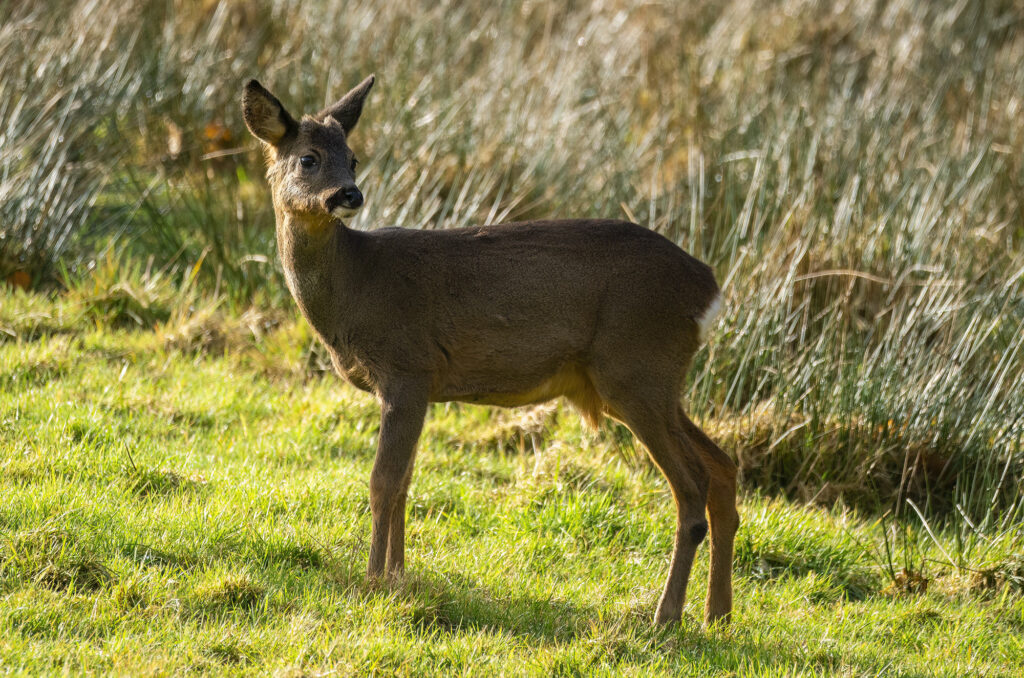
Bucking the trend
Local buck Russet hasn’t exactly become territorial yet, but he is starting to spend less time with the other deer and more time alone. Using a thermal camera makes it easier to spot him, particularly when he is tucked up on the ground ruminating. To capture the series of images below, I first spotted him using the thermal camera and then made sure he was fully aware of my presence – by talking to him and staying visible at all times. When doe Ruby emerged from the field into the woods nearby, Russet got to his feet and began grooming himself before following her lead by browsing on nearby holly.
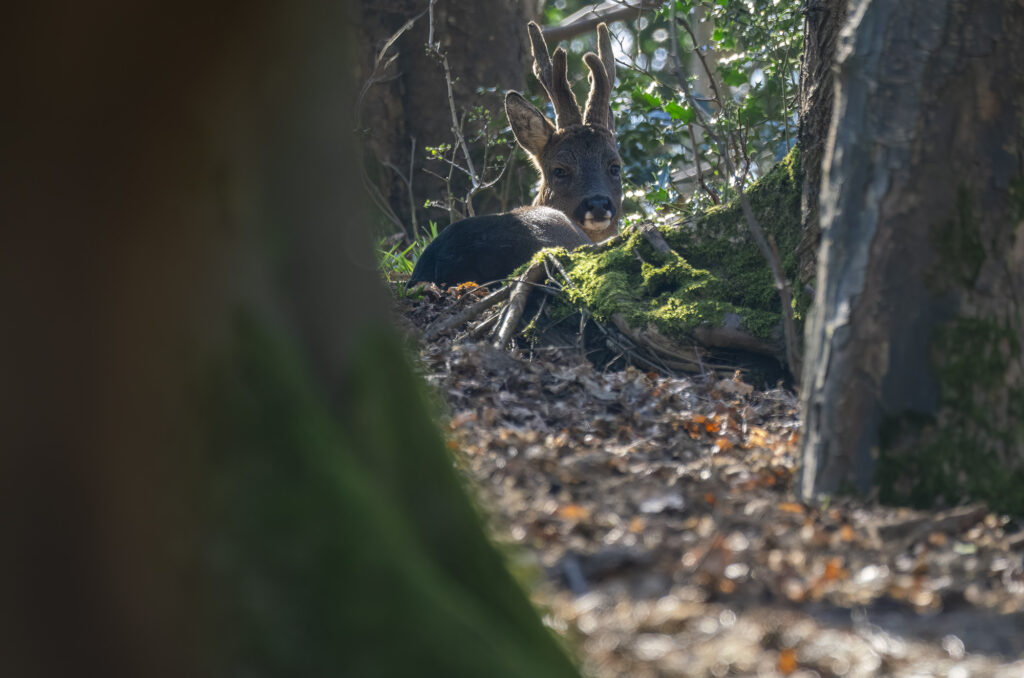
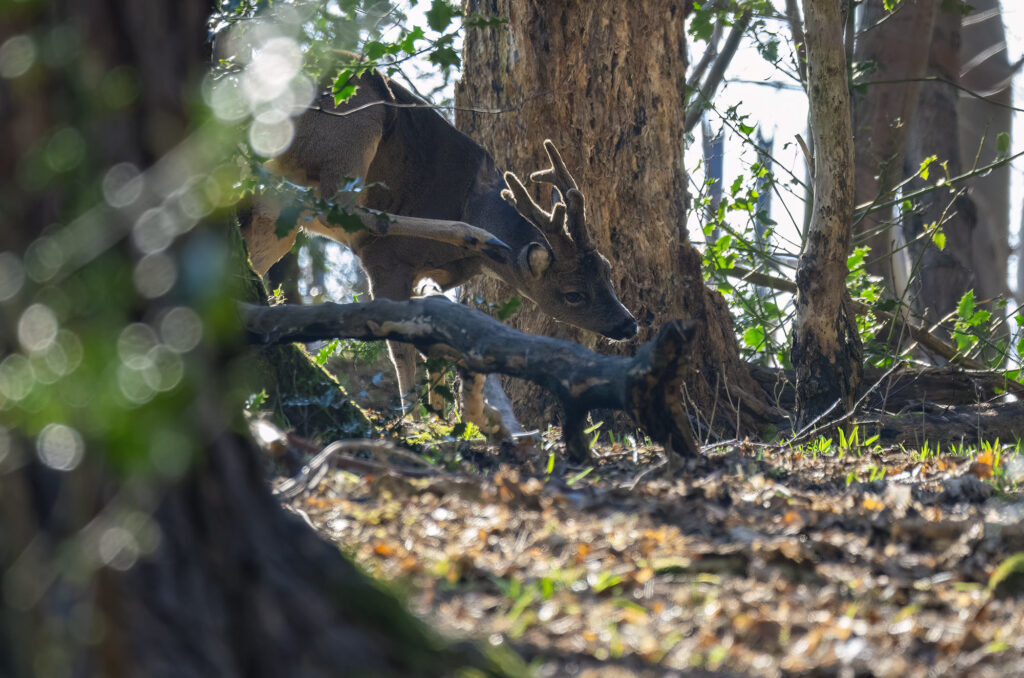
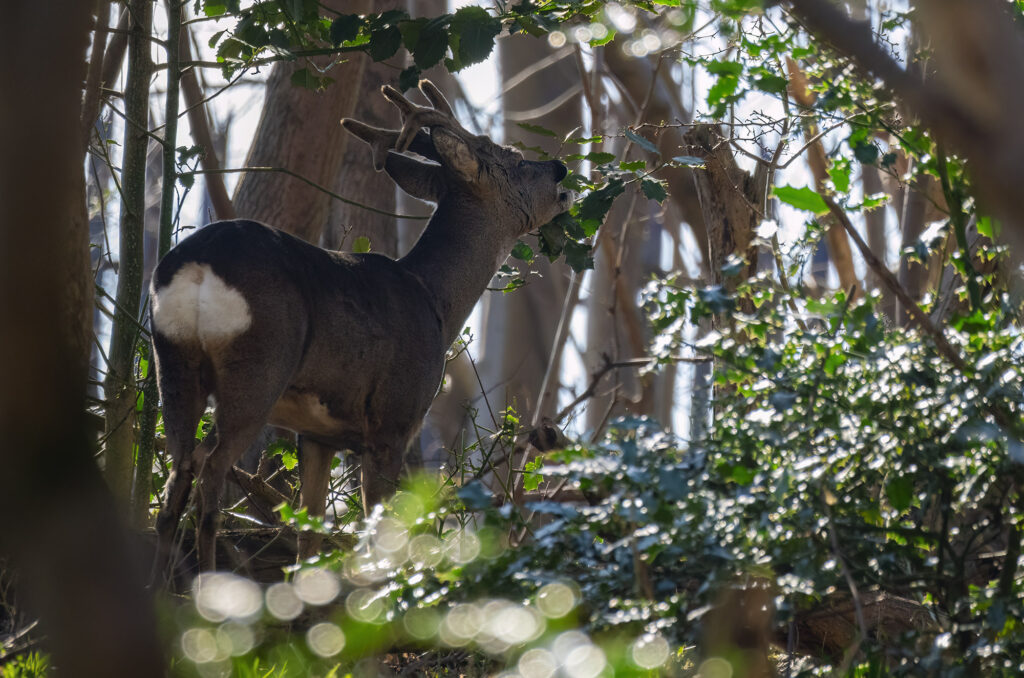
While the thermal camera often allows me to spot Russet from a distance, capturing decent images without disturbing him also requires quickly tuning into his mood. Some encounters with him are relaxed, where he is completely comfortable with my presence. On other days, he will only tolerate me at a certain distance, slowly walking away to indicate his preference for space. Occasionally, I can tell right away that he would rather not have me around at all – in those instances, it’s my job to leave as quickly and quietly as possible.
Russet’s antlers are still covered in velvet, but soon, his rising testosterone levels will cause the blood supply to his antlers to shut off, stopping their growth. Once growth ceases, the velvet sheath covering them will begin to peel away, revealing the clean antlers beneath. Roe deer bucks cast (or shed) their antlers around November to December, with older males typically shedding first. Their antlers then regrow between January and March, initially covered in velvet. Once fully grown and the velvet has been rubbed off, they are described as clean. Again, it is the older males that tend to have clean antlers first.
Last year, I missed Russet shedding the velvet on his antlers in April, so that’s something I hope to capture on camera next month.
Moulting moments
While the does don’t have velvet to shed, they are already shedding something else – their winter coats – and, boy, does it make them look a mess! Their usually sleek coats become patchy, sometimes exposing bare skin. In spring, roe deer shed their insulating winter pelage, which is replaced by shorter, thinner, and lighter brown fur. You will also notice a shift in their coat colour from dark brown in winter to a warm russet shade in spring.
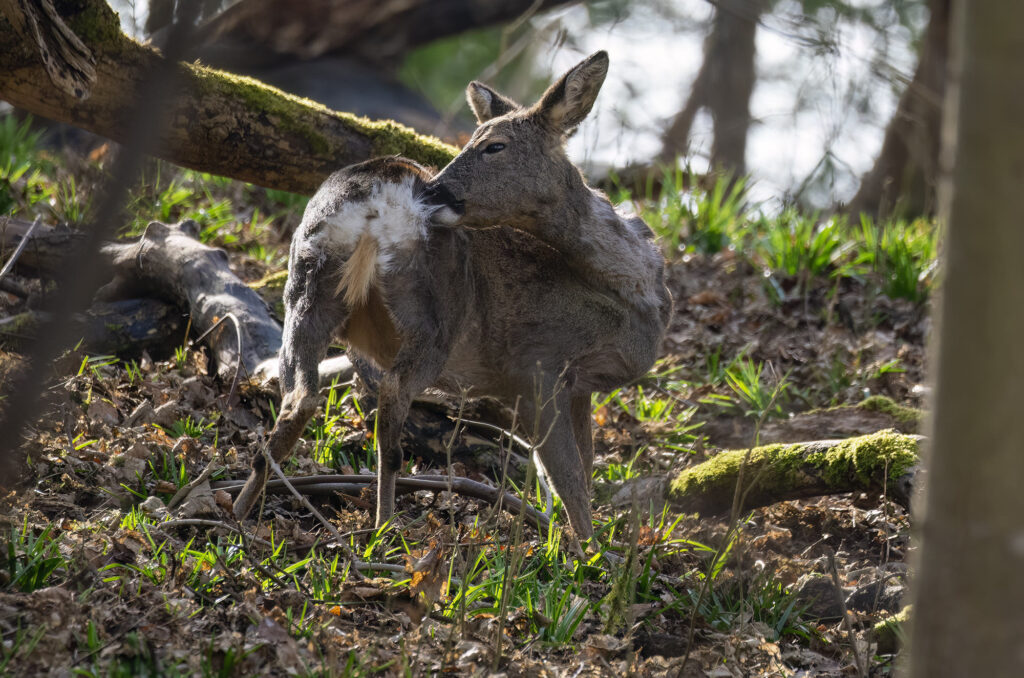
Ruby was comfortable with me watching her groom, allowing me to capture images of her licking and tugging at the hair around her backside. Observing and photographing these seasonal changes is always a fascinating part of capturing roe deer behaviour.
Springing forward
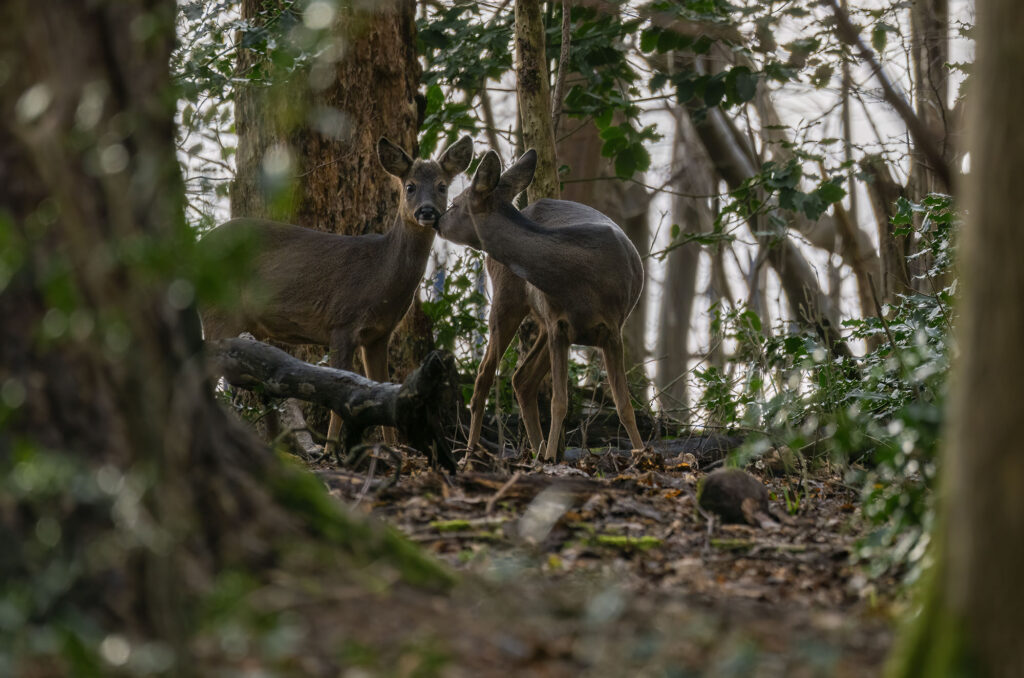
Photographing roe deer in early spring offers a unique opportunity to witness their seasonal transitions and behavioural shifts up close. From young bucks testing their independence to mature males preparing for territorial disputes, this time of year provides a dynamic and rewarding experience for any wildlife photographer. With patience, careful observation, and a respect for their space, it is possible to capture images while appreciating the natural rhythms of their lives. As the season progresses, I look forward to documenting more of their journey – perhaps even capturing the elusive moment when Russet sheds the velvet from his antlers.
